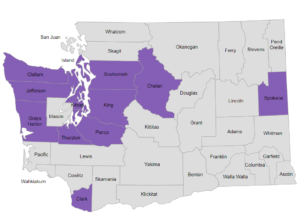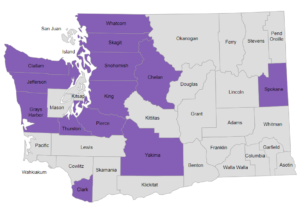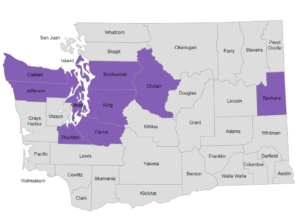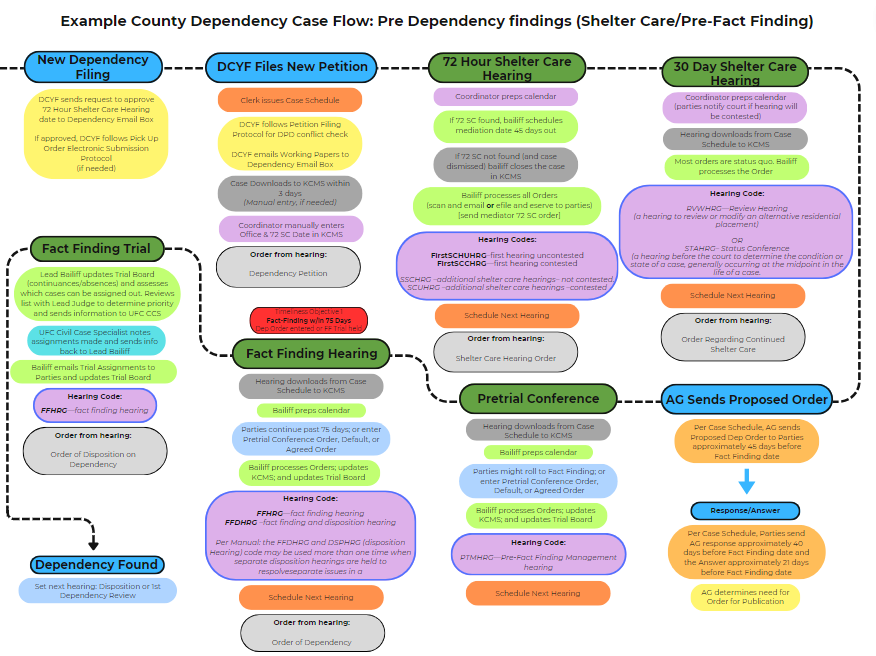Best Practice Standard 1: Organization and Structure
Executive Summary: “FTC has agreed upon structural and organizational principles that are supported by research and based on evidence informed policies, programs, and practices. The core programmatic components, day-to-day operations, and oversight structures are defined and documented in the FTC policy and procedure manual, participant handbook, and memoranda of understanding (MOUs)”
Provisions of BP 1:
Family Treatment Court Best Practice Standards p. 10
- Multidisciplinary and Multisystemic Collaborative Approach
- Partnerships, Community Resources, and Support
- A Multidisciplinary Team
- Governance Structure
- Shared Mission and Vision
- Communication and Information Sharing
- Cross-Training and Interdisciplinary Education
- Family-Centered, Culturally-Relevant, and Trauma-Informed approach
- FTC Policy and Procedure Manual
- FTC Pre-Court Staffing and Court Review Hearing
Best Practice One will cover a wide variety of topics related to Structure and Organization of FTCs, these are broken up and demonstrated through examples, videos, and other resources. The content should take approximately one hour to complete, then you will be asked to complete a short evaluation if you’d like to receive a certificate of completion. If you have any questions or comments, please contact Meghan Fitzgerald, FTC Training Coordinator.
Provision A. Multidisciplinary and Multisystemic collaborative approach
Learning Outcome: (1)To understand the benefits and challenges of collaboration between systems in an FTC (2) identify strategies to enhance effective collaboration
Resources
Full Transcript .doc | Full Transcript pdf
Links in video:
Download a copy of the best practice standards for FTCs
Provision B. Partnerships, Community Resources, and Support
Provision 2 Learning Objective: To identify community partners and stakeholders, and develop formalized agreements with those organizations and individuals.
No video for this section!
This provision has two important areas of consideration.
First, families may not be fully supported by only including the three systems mentioned in provision A (the courts, child welfare, and SUD treatment). Instead, additional community partnerships should be considered so that we can meet a family’s unique individual needs. Consider initiating a community resource mapping activity to bring together a full list of available resources, then reviewing that list annually. Much like a teeth cleaning, this work best if you just book it out in advance and get it on your calendars early!
Second, when a community partner is brought in to provide services to FTC families, this partnership should be formalized using an Memorandum of Understanding (MOU). These formalized agreements keep expectations clear for both sides, and lead to better outcomes for families. For the family, this MOU should specify what information is allowed to be shared, and when in order to protect the privacy of important health information. For the FTC team, this should detail the role and responsibilities of any service providers. Are they expected to give reports? Attend staffings? How often? Clarity will allow an educated decision to join, and less confusion later. We have several MOU examples in the resources below, and there are a number of templates available online.
Resources
Linking Systems of Care, via the NCJFCJ offers an excellent overview of MOUs with a template at the bottom
Clark County MOU example (edited slightly to make document accessible)
King County comprehensive MOU example
Montana MOU example (from NADCP website)
Montana also maintains a number of MOU forms on their website (scroll down)
Download a copy of the best practice standards for FTCs
Provision C. Multidisciplinary Team
Learning Objective: (1) To understand the characteristics, values and areas of expertise represented in a multidisciplinary team.
Additional Learning Objective *: (2)Understand why diversity, and equity are important to building a team and hiring people who will join FTCs. (3) Begin to develop skill in hiring a team that values equity, and understand, in brief, what representation and cultural competence might look like in a local Washington State County.
Provision D. Governance Structure
Learning Objective: To become familiar with the suggested governance structure of a local FTC, which includes a local operational team, a policy and procedures committee, and a steering or community partners committee.
Provision E. Shared Mission and Vision
Learning Objective: To understand the best practice standard, which shows the benefit of a shared mission and vision (and how developing these leads to an understanding of shared values)
Video Training for Provision C, D, and E
Resources
Full Transcript .doc | Full Transcript pdf
Provision F: Communication and Information Sharing
Learning Objective:
This section lays out a few specific communication strategies
Provision G: Cross Training and Interdisciplinary Education
Learning Objective:
As established in the video for provision C through E, the members of your FTC operational team are your best assets. They know the most about their field in relationship to FTCs, and are therefore your best resource for training, development of materials, and understanding of each other’s roles and disciplinary norms. Collaboration can be challenging, but working together to learn and teach each other is an excellent team building activity.
Video for Provision F & G
Resources
Transcript docx | Transcript PDF
Provision H: A Family Center, Culturally Relevant, and Trauma-Informed Approach
Trainings from our partners and our previous meetings are available in each of these areas. Follow the links below to specific trainings that have been recorded, and keep an eye on your email and calendars for other trainings available in the near future.
Child and Family Futures Discusses a Family Based Approach
Laura Vogel and KatieBelle Karstens discuss Trauma Responsive Court Practices
Dr Karen Johnson (Dr K) Speaks about Equity in our FTC All Sites Meeting
Provision I: FTC Policy and Procedures Manual
Learning Objective: (1) To view Examples of existing FTC Policy and Procedures Manuals. (2)To understand best practices surrounding the development and review of policy and procedures manuals for FTCs.
Developing a new policy and procedures manual is no small task. To assist with this. Clark County has an excellent policy and procedures manual you can see here as an example.
In addition to examples, it is important that you, as a team,
- (1) develop a plan to update the manual yearly, using the expertise of group members
- (2) Decide who the manual should be distributed to (referring bodies, FTC Team Members, Community Members?)
- (3) Determine who will be on you policy and procedures team and when you will meet, outside of court staffing and hearing times (at least quarterly)
Provision J: FTC Pre-Court Staffing and Court Review Hearing
All professionals involved in the dependency case, including judicial officers (when ethically possible), and all attorneys should attend staffing to be sure the family’s needs are all met and the judge is appropriately in formed to make educated decisions during the hearing.
Child and Family Futures has recently developed an excellent resource for staffing and hearings in FTCs. Watching the animated videos and discussion guides available in the links below as a team will allow you to develop a similar strategy in your court! Pay attention to who is attending, talking, and leading each of these meetings and consider what strategy might work best in your court.
Learning Objectives from Child and Family Futures Putting the Pieces together: Applying a Family Centered, Problem Solving, Approach to Family Treatment Court Staffing and Court Hearings.
- Learn how your FTC pre-court staffing and court hearings shape the path for families working toward reunification and successful case closure.
- Learn how to ensure FTC pre-court staffing and court hearings address the family’s needs.
- Examine how to implement effective engagement strategies for families affected by SUDs by shifting from “problem reporting” to “problem solving” in your pre-court staffing.
- Use the Team Discussion tool and Take Action tool to create an action plan to guide implementation of this approach in your FTC.
The animates videos are embedded below so that you can watch them without leaving our site. The full evaluation for credit will assume you have watched those two animated videos.
An Early Engagement Scenario (pre-court staffing and court hearing)
A Reunification Scenario (Pre-Court Staffing and Court Hearing)
Child and Family Futures Team Discussion Tool




